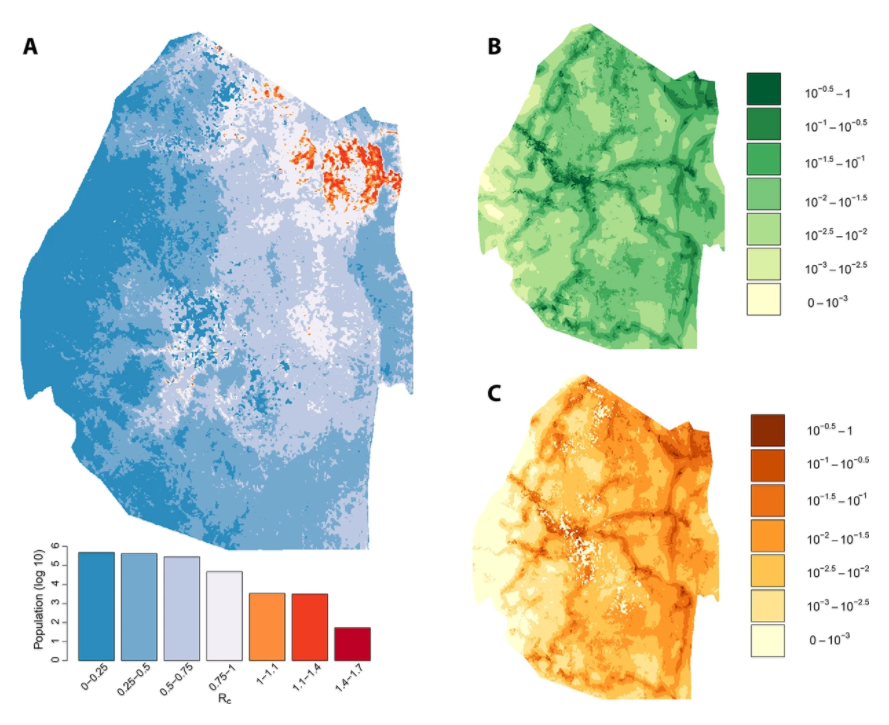As countries get closer to eliminating malaria, targeting their resources effectively becomes an increasingly urgent question. When malaria transmission has dropped to low levels, it can be inefficient to continue implementing universal control measures that cover the whole country. This is because transmission often persists in “hot spots”: specific areas where malaria parasites continue to spread within the population, or places where transmission has stopped but where imported infections – brought in by travelers who have visited neighboring countries where malaria is much more prevalent – are most likely to spread from person to person and restart transmission.
Swaziland has made great progress in reducing malaria in recent years. Its National Malaria Control Program has reported a substantial decline in cases since 1999, and it has the potential to achieve the goal of eliminating the disease entirely. In order to do so, though, decision-makers in Swaziland need to look beyond national trends and focus more closely on differences that exist within the country – to identify the hot spots where malaria hasn’t yet been eliminated, and where risk of transmission is highest. They can then allocate resources toward these areas, making sure that surveillance efforts, case investigation, and other control interventions are targeted at the communities most in need of them.
In order to help in this effort, researchers have developed a model that captures an important aspect of the potential for malaria transmission in the country: how many new malaria infections are caused by each case, and how this varies across Swaziland. This metric has great operational value, as the places where this number is highest (that is, where each individual with malaria causes the largest number of new infections) are the places where control efforts should be most intensely focused, and where imported cases need to be dealt with as quickly and efficiently as possible.

Source: https://elifesciences.org/articles/09520#fig2
The figure above highlights some of these findings. Map A shows receptivity: how many new infections each infectious person causes, or potential for ongoing transmission (with red indicating the highest potential). Map B shows vulnerability: the rate of imported infections (with dark green showing areas with the highest rates of importation). Map C shows these measures taken together, or malariogenic potential: the expected number of malaria cases that could occur as a result of both receptivity and vulnerability combined (with areas in red indicating where this potential is highest).
These metrics yield important operational insights for public health authorities. Researchers found that while in some areas of the country malaria rarely spreads between individuals, in others, particularly rural areas near the border with Mozambique, each individual infected with malaria spread the disease to more than one other person. This means that elimination has not yet been achieved in these particular places, and authorities may consider preventively treating these communities with anti-malarial drugs or continuing to provide them with interventions that protect them from mosquitos. In addition, the model reveals areas where vulnerability to malaria remains high even when transmission has been interrupted; here, resources might be best focused on providing preventive treatment to travelers intending to visit places where malaria is still spreading.
This model therefore allows for responses that are tailored to the very specific transmission dynamics of particular areas, with the potential to help Swaziland maintain its progress against malaria and move further toward elimination.
Read full article
(opens in a new window)
Citation
Reiner RC Jr, Le Menach A, Kunene S, Ntshalintshali N, Hsiang MS, Perkins TA, Greenhouse B, Tatem AJ, Cohen JM, Smith DL. Mapping residual transmission for malaria elimination. eLife. 29 Dec 2015;4:e09520. doi: 10.7554/eLife.09520